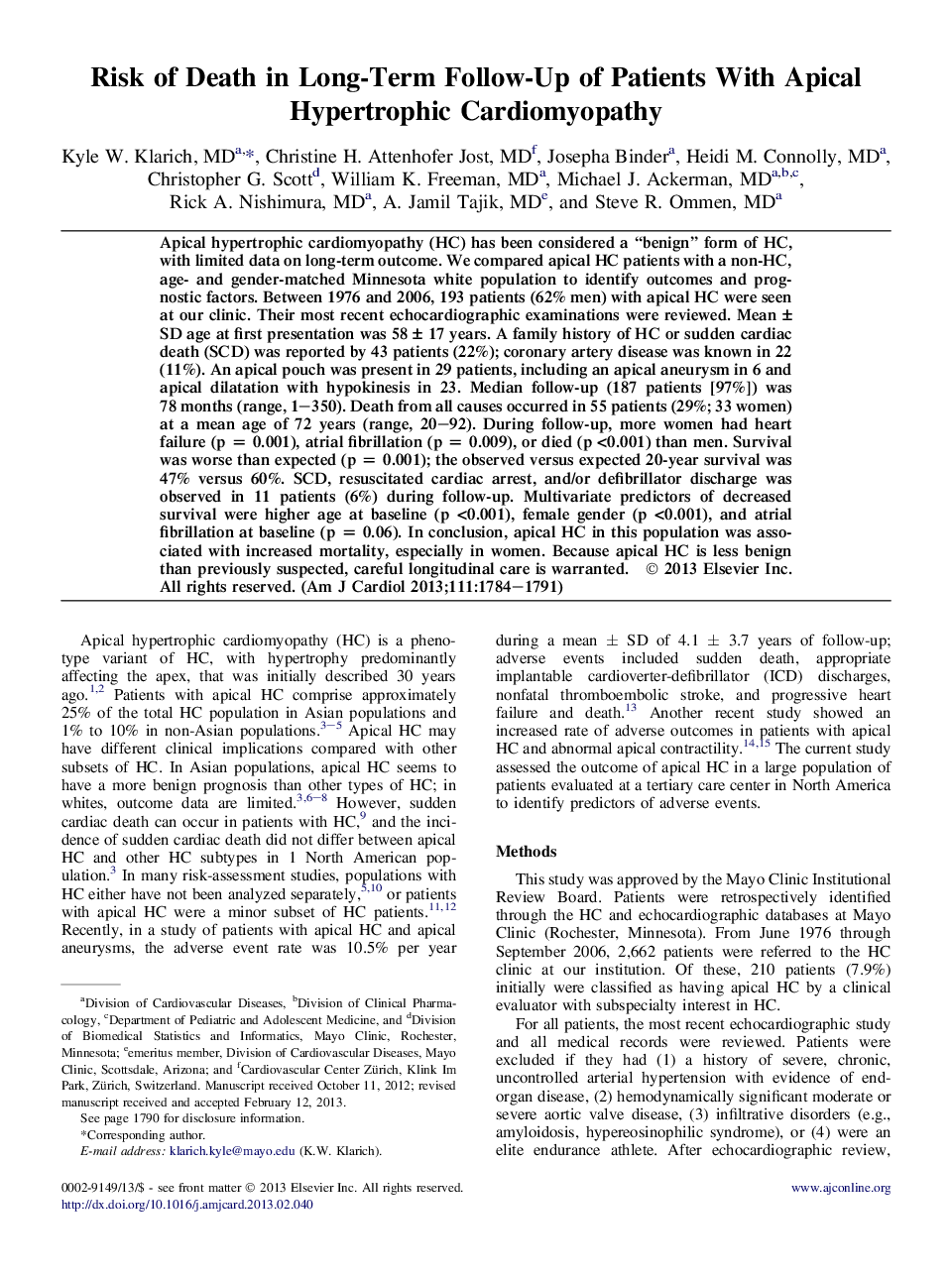| Article ID | Journal | Published Year | Pages | File Type |
|---|---|---|---|---|
| 2854982 | The American Journal of Cardiology | 2013 | 8 Pages |
Apical hypertrophic cardiomyopathy (HC) has been considered a “benign” form of HC, with limited data on long-term outcome. We compared apical HC patients with a non-HC, age- and gender-matched Minnesota white population to identify outcomes and prognostic factors. Between 1976 and 2006, 193 patients (62% men) with apical HC were seen at our clinic. Their most recent echocardiographic examinations were reviewed. Mean ± SD age at first presentation was 58 ± 17 years. A family history of HC or sudden cardiac death (SCD) was reported by 43 patients (22%); coronary artery disease was known in 22 (11%). An apical pouch was present in 29 patients, including an apical aneurysm in 6 and apical dilatation with hypokinesis in 23. Median follow-up (187 patients [97%]) was 78 months (range, 1–350). Death from all causes occurred in 55 patients (29%; 33 women) at a mean age of 72 years (range, 20–92). During follow-up, more women had heart failure (p = 0.001), atrial fibrillation (p = 0.009), or died (p <0.001) than men. Survival was worse than expected (p = 0.001); the observed versus expected 20-year survival was 47% versus 60%. SCD, resuscitated cardiac arrest, and/or defibrillator discharge was observed in 11 patients (6%) during follow-up. Multivariate predictors of decreased survival were higher age at baseline (p <0.001), female gender (p <0.001), and atrial fibrillation at baseline (p = 0.06). In conclusion, apical HC in this population was associated with increased mortality, especially in women. Because apical HC is less benign than previously suspected, careful longitudinal care is warranted.
